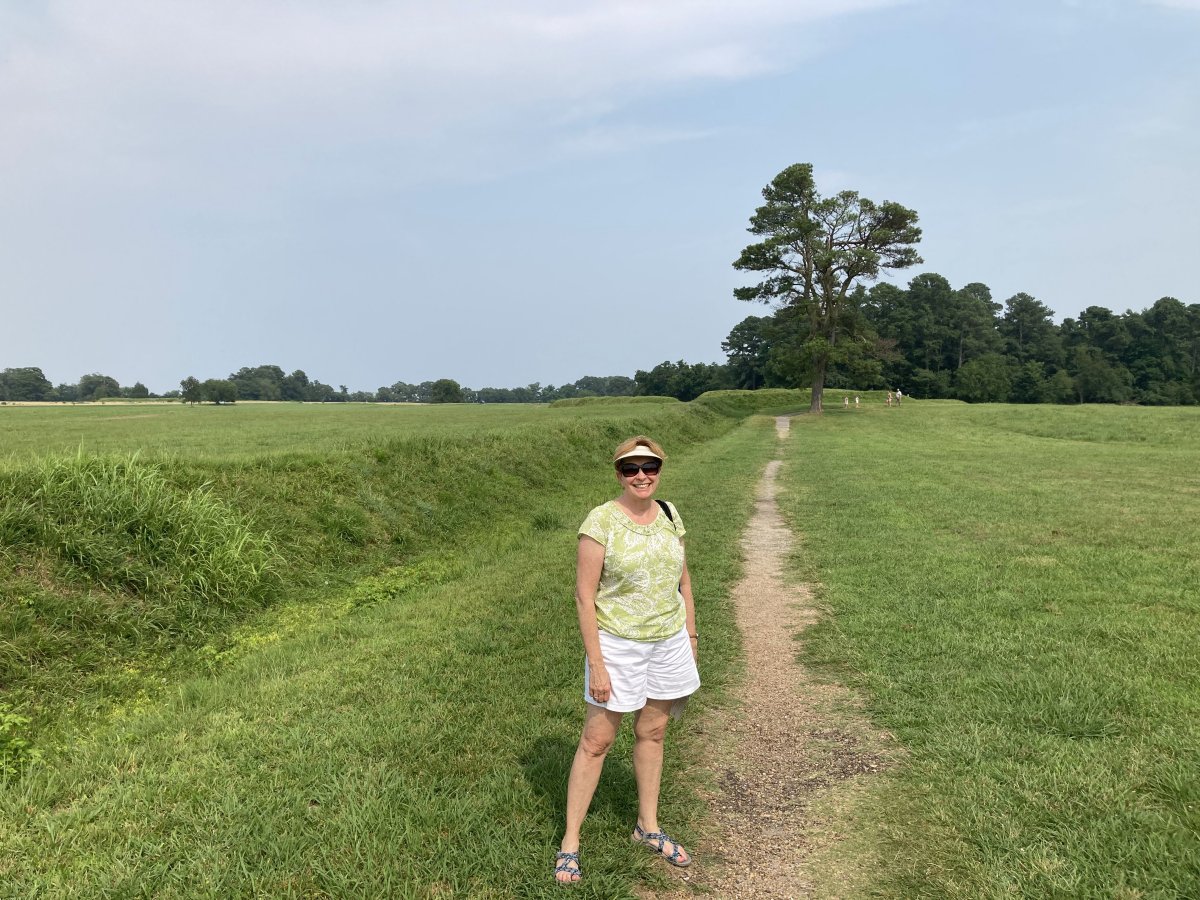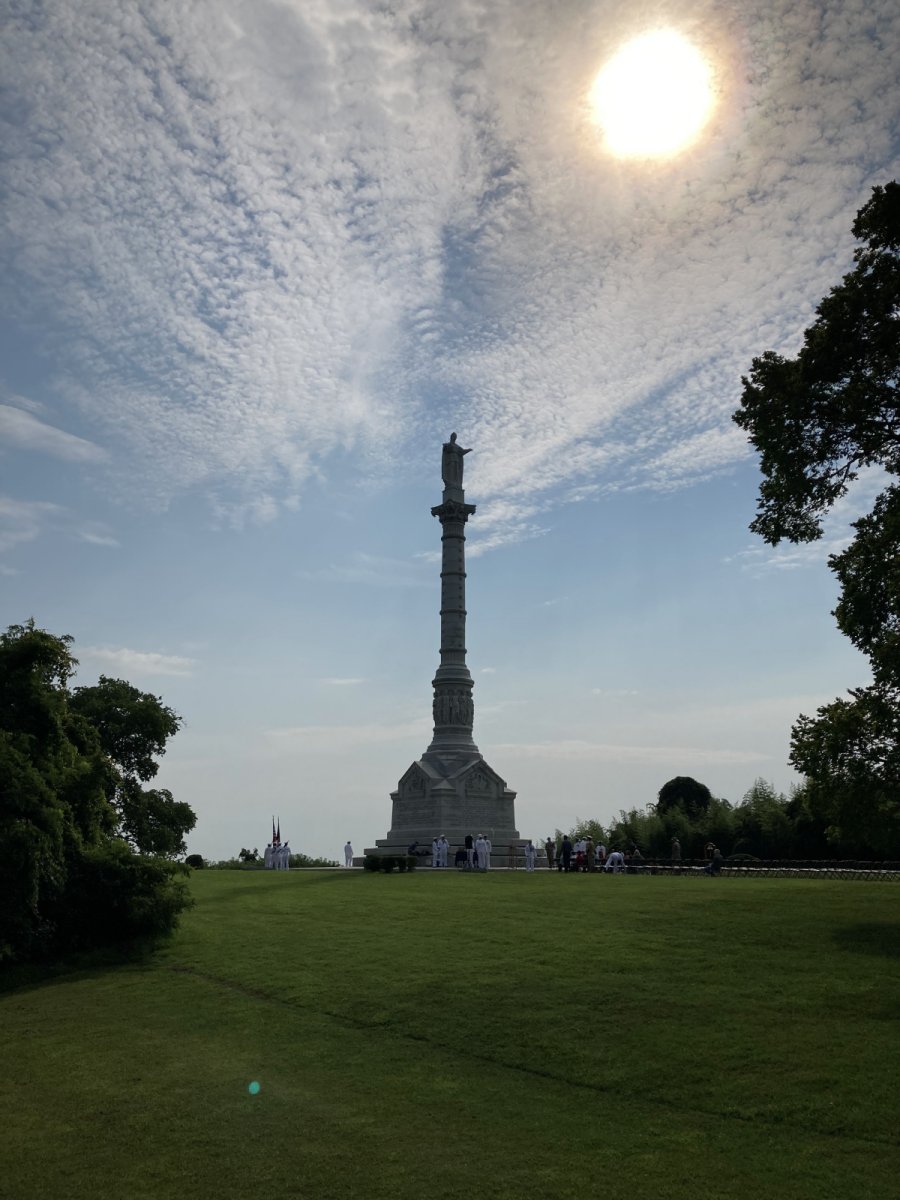July 20, 2021 - Yorktown
Lynnette and I drove down to the Yorktown-Jamestown-Williamsburg area for a few days to see the sights. The trip was prompted by a flight I made over Yorktown back in January.
Our first stop was at the American Revolution Museum in Yorktown. This museum is relatively new and is exceptionally well done. I really enjoyed it.
The museum covers a thorough history of the American Revolution from about 1760 to 1790. There are history boards, timelines, biographies, films, and artifacts. The film “Liberty Fever” reviews events that lead to the world of Revolutionary America. The 4D film “The Siege of Yorktown” transports you into the action of America’s 1781 victory shown on a 180-degree screen with wind, smoke and the thunder of cannon fire.
In addition to the inside museum there were outside exhibits and interpreters in period costume: a Continental Army encampment and an American homestead farm in the late 18th century.


After the museum, we headed over to the Yorktown Battlefield, which is part of the Colonial National Historic Park (as is Jamestown and the scenic Colonial Parkway that goes under Williamsburg). We stopped in the Visitors Center. Sadly, the only open part of it was the line to collect your entrance fee. We did get a map, though.
Yorktown Battlefield has a pretty good driving tour and Tour Guide App . At each stop, you can listen to information about the stop on your smartphone.
The Siege of Yorktown, also known as the Battle of Yorktown, or the Surrender at Yorktown ending on October 19, 1781, at Yorktown, Virginia, was a decisive victory by a combined force of American Continental Army troops led by General George Washington and French Army troops led by the Comte de Rochambeau over a British army commanded by British peer and Lieutenant General Charles Cornwallis. The culmination of the Yorktown campaign -- which involved General Washington marching his army all the way from the New York area to Yorktown, Virginia -- the siege proved to be the last major land battle of the American Revolutionary War in the North American region, as the surrender by Cornwallis, and the capture of both him and his army, prompted the British government to negotiate an end to the conflict.
Here is Lynnette at the Grand French Battery pointing at Yorktown.

A good map of the Yorktown campaign.

A major naval victory by the French over the Royal Navy made the victory possible. In the beginning of September 1781, Admiral Comte de Grasse, commander of the French West Indies fleet, defeated a British fleet led by Sir Thomas Graves that came to relieve Cornwallis at the Battle of the Chesapeake. As a result of this victory, de Grasse blocked any reinforcement or escape by sea for Cornwallis and also disembarked the heavy siege guns required by the allied land forces. By late September, Washington and Rochambeau arrived, and the army and naval forces completely surrounded Cornwallis. Had the Royal Navy made more of an effort to relieve Cornwallis, things might have been different.



What is left of Redoubt #10.
Redoubt 10 was near the river and held only 70 men, while redoubt 9 was a quarter-mile inland, and was held by 120 British and Germans. Both redoubts were heavily fortified with rows of abatis surrounding them, along with muddy ditches that surrounded the redoubts at about 25 yards. Washington devised a night attack plan in which the French would launch a diversionary attack on the Fusiliers redoubt, and then a half an hour later, the French would assault redoubt 9 and the Americans redoubt 10. Redoubt 9 would be assaulted by 400 French regular soldiers of the Royal Deux-Ponts Regiment under the command of the Count of Deux-Ponts and redoubt 10 would be assaulted by 400 light infantry troops under the command of Alexander Hamilton.




Looking from Redoubt #9 over in the direction of the Visitors Center and Yorktown. Once the Redoubts were in Allied hands, Washington was able to move the artillery batteries even closer to Yorktown and force Cornwallis to surrender.
I must say, I was disappointed in the condition of the Redoubts and Battlefield in general. As you can see, the redoubts were overgrown, the paths were broken and cracked, and the placards were faded and in some cases unreadable. The place just did not seem very well maintained. The only Park employees we saw drove around in brand new white Trucks and SUVs.






The Victory Monument.

Yorktown is a nice, quaint little town on the south shore of the York River. At waters edge is a beach, and a number of nice restaurants.
The bridge on the left is the George P. Coleman Memorial Bridge (known locally as simply the Coleman Bridge). It's a double swing bridge that spans the York River between Yorktown and Gloucester Point, connecting the Peninsula and Middle Peninsula regions of Tidewater, Virginia. The bridge is the only public crossing of the York River. Originally built in 1952, it was reconstructed and widened in 1995.
The current 3,750-foot long double-swing-span bridge carries United States Route 17, a four-lane arterial highway. The movable span is needed to allow ship access to several military installations that are upstream of the bridge, most notably, the United States Navy's Naval Weapons Station Yorktown. The roadways are almost 90 feet above the river at the highest point of the bridge. The bridge is the largest double-swing-span bridge in the United States, and second largest in the world.
The toll bridge was named for George P. Coleman, who from 1913 to 1922 was the head of the Virginia Department of Highways and Transportation, predecessor to the Virginia Department of Transportation (VDOT).

On our final day, after checking out of the B&B, we finished the driving tour of Yorktown Battlefield which included the surrender site.
The Surrender Site: the British forces marched between lines of American and French troops, where the wooden fences now are.



Painting of the Surrrender.
The British had asked for the traditional honors of war, which would allow the army to march out with flags flying, bayonets fixed, and the band playing an American or French tune as a tribute to the victors. However, Washington firmly refused to grant the British the honors that they had denied the defeated American army the year before at the siege of Charleston. Consequently, the British and Hessian troops marched with flags furled and muskets shouldered, while the band was forced to play "a British or German march."
Cornwallis refused to attend the surrender ceremony, citing illness. Instead, Brigadier General Charles O'Hara led the British army onto the field. O'Hara first attempted to surrender to Rochambeau, who shook his head and pointed to Washington. O'Hara then offered his sword to Washington, who also refused and motioned to Benjamin Lincoln, his second-in-command. The surrender finally took place when Lincoln accepted the sword of Cornwallis' deputy.
